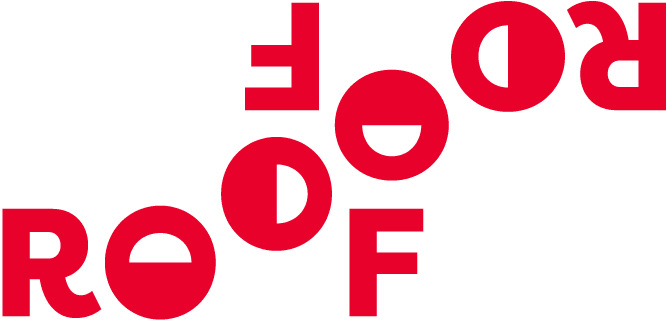Apr 18, 2024 | Marketing, Sales, Web Design
In the contemporary marketplace, Facebook has evolved into a powerful tool for businesses across all industries to increase their visibility and attract new customers. For roofing companies, Facebook ads offer a targeted approach to advertising that can significantly impact your business’s growth and clientele expansion. This article explores why you should consider Facebook ads for your roofing business and provides practical tips on how to create effective campaigns.
Why Facebook Ads?
Facebook boasts over 2 billion active users, providing a vast audience for your roofing business. The platform offers advanced targeting options that allow you to reach potential customers based on specific demographics, interests, and behaviors. This means your ads can be shown to homeowners in your local area who may be in need of roofing services. Additionally, Facebook’s cost-effective pricing means you can achieve substantial visibility without exhausting your marketing budget.
Setting Goals for Your Campaign
Before launching a Facebook ad campaign, it’s crucial to set clear, measurable goals. Whether you want to increase brand awareness, generate leads, or drive traffic to your website, having specific objectives will help you design more effective ads and measure the success of your campaign. For roofing businesses, common goals include getting quote requests, booking consultations, or promoting seasonal roof inspections and maintenance services.
Understanding Facebook Ad Types
Facebook offers various types of ads you can utilize to promote your roofing business:
- Image Ads: These simple ads are a great way to start with Facebook advertising. A striking image combined with a compelling caption can effectively attract the attention of potential customers.
- Video Ads: Video ads can show your team in action, providing a behind-the-scenes look at a roofing job or demonstrating the quality and safety of your work. This type of content is highly engaging and can increase the trustworthiness of your brand.
- Carousel Ads: Featuring multiple images or videos, carousel ads allow you to showcase different services you offer, such as roof repair, installation, or maintenance.
- Lead Ads: These ads are designed specifically for lead generation. They include a built-in form that makes it easy for Facebook users to sign up for more information, effectively generating potential leads directly from the ad.
Targeting the Right Audience
Facebook’s targeting capabilities are a key component in the success of your ad campaign. You can target users by location, age, gender, interests, and behaviors, among other options. For a roofing company, you might want to target homeowners within a specific age range or properties in areas that recently experienced severe weather conditions. Additionally, retargeting options allow you to reach people who have previously interacted with your brand, reminding them of your services and potentially prompting them to get in touch.
Crafting Compelling Ad Content
The effectiveness of your Facebook ads largely depends on the quality of the content. Ensuring your ads resonate with the target audience is paramount. High-quality images of your work, testimonials from satisfied customers, and clear, direct calls to action (CTA) like Contact us for a free estimate or Learn more can improve the performance of your ads. Also, maintain authenticity and professionalism in every ad, as these elements reflective of your business’s values and professionalism.
Monitoring and Adjusting Your Campaigns
Once your ads are live, it’s important to continuously monitor their performance and make necessary adjustments. Use Facebook’s Ads Manager to track metrics such as impressions, click-through rates, and conversions. Analyzing this data allows you to see what’s working and what isn’t, helping you to optimize your campaigns for better results.
Conclusion
Facebook ads can be an incredibly effective tool for roofing businesses looking to grow their customer base and increase their sales. By setting clear goals, understanding the ad types available, targeting the right audience, creating compelling content, and continually monitoring performance, you can harness the full potential of Facebook advertising to boost your business’s success.
With the right strategy, roofing companies can see significant returns from their Facebook advertising efforts, making it a valuable component of your digital marketing efforts. Whether you’re just starting out or looking to enhance your existing campaigns, these strategies can provide a framework for effective advertising on Facebook.

Jan 15, 2024 | Marketing, Web Design
Introduction to Monetizing Your Website
Creating a website is a powerful first step towards establishing a digital presence, but the next pivotal move for any website owner is effectively monetizing it. Monetizing your website not only helps in generating income but also aids in scaling your site, enhancing content quality, and improving user experience. This article explores various strategies that can help turn your website into a profitable venture.
1. Displaying Advertisements
Google AdSense and Other Ad Networks
One of the most common methods to monetize a website is through displaying ads. Google AdSense is widely recognized for its ability to provide relevant ads based on your audience’s interests. Signing up is free and straightforward, making it an excellent starting point for beginners. Other ad networks, such as Media.net and PropellerAds, can also serve as viable alternatives depending on your traffic and niche.
Direct Banner Advertisements
For those who prefer more control over the ads shown on their website, direct banner advertisements can be a great choice. This involves directly negotiating with advertisers without an intermediary network, which can lead to better rates and relevant placements.
2. Affiliate Marketing
Affiliate marketing involves promoting products or services from other businesses and earning a commission on the sales or leads generated. This method is highly effective, especially if you have a niche audience that trusts your recommendations. Companies like Amazon Associates and ClickBank offer extensive affiliate programs that you can join to find products aligning with your content.
3. Selling Digital Products or Services
Digital Products
If you have expertise in a particular area, selling digital products such as eBooks, courses, software, or music, can be extraordinarily profitable. Digital products don’t require physical inventory, making them easier to manage and scalable.
Services
Offering services through your website, such as consulting, writing, or design, can also be a lucrative way to monetize. This strategy works well when paired with an active blog or a portfolio section that showcases your expertise and achievements.
4. Sponsored Content
Sponsored content involves collaborating with companies to create content that subtly promotes their products or services. This approach is typically more engaging and less intrusive than traditional advertisements. Transparency is crucial, so ensuring your audience is aware of sponsored content is vital to maintaining trust.
5. Membership Programs
Setting up a membership program can provide a continuous revenue stream. Members pay a recurring fee to access exclusive content, specialized communities, or additional features. This model fosters a closer connection between you and your most dedicated followers.
6. Donations and Crowdfunding
If your website operates on providing free information, like tutorials or nonprofit projects, receiving donations can be an effective way to monetize. Integrating platforms like Patreon or using a simple PayPal donation button allows your audience to support your efforts financially. Crowdfunding through platforms like Kickstarter can also be an effective method to fund specific projects or new content development.
7. E-commerce and Physical Products
If relevant to your audience, selling physical products directly through your website can be a direct and impactful way to generate revenue. Utilizing ecommerce platforms like Shopify or WooCommerce can simplify the process of setting up an online store.
Conclusion
Monetizing a website effectively requires experimenting with different strategies and continuously refining them based on what resonates with your audience. It also involves balancing monetization with user experience to maintain and grow your traffic. By understanding and analyzing the needs and behaviors of your visitors, you can choose and adapt the most suitable methods to turn your website into a thriving profit-generating platform.

Jan 10, 2024 | Marketing, SEO, Web Design
Introduction to Building a Perfect Roofing Website
In today’s digital age, having a compelling online presence is crucial for any business, including those in the roofing industry. A well-designed website serves as the virtual front door to your business, helping you attract more customers, showcase your services, and establish credibility. This article will guide you through the essential tips and strategies to build an effective roofing website that not only looks great but also performs well.
Understanding the Importance of User Experience (UX)
User experience is a critical factor in the success of a website. A site that is easy to navigate, fast, and user-friendly can significantly enhance user satisfaction and increase the likelihood of converting visitors into customers. Ensure that your roofing website is designed with UX in mind, focusing on aspects such as logical navigation, fast load times, and mobile responsiveness.
Mobile Responsiveness
With more people using mobile devices to access the internet, your roofing website must perform seamlessly across all devices. A mobile-responsive design adjusts according to the screen size, ensuring that your content is accessible and readable on smartphones, tablets, and desktops.
Fast Load Times
Website speed is a vital UX and SEO factor. Slow-loading websites can frustrate users and increase bounce rates. Optimize images, leverage browser caching, and minimize HTTP requests to enhance your site’s loading speed.
SEO Strategies for Roofing Websites
Search Engine Optimization (SEO) is essential for making your roofing website visible to potential clients. Local SEO is particularly important in the roofing industry to target customers in specific regions.
Keyword Research
Conduct thorough keyword research to find terms that your potential customers are using to find roofing services. Tools like Google Keyword Planner can help you identify relevant keywords, including local terms (e.g., roof repair in [City Name]).
Local SEO
Optimize your website for local search by including your city or region’s name in your meta tags, content, and URLs. Register your business with Google My Business, and always maintain up-to-date contact information and operational hours.
Content is King
Quality content is vital for engaging visitors and improving SEO rankings. Your roofing website should provide valuable information that addresses common customer questions and showcases your expertise.
Blog Posts
Maintain a blog to share expert advice, tips, and industry news that can help homeowners make informed decisions. Regularly updating your blog also signals to search engines that your website is active, boosting your SEO efforts.
Before and After Galleries
Visual content can be incredibly persuasive. Include a gallery of before-and-after photos of your roofing projects to visually demonstrate the quality of your work and the transformation you can provide.
Social Proof and Testimonials
Testimonials and reviews are powerful tools for building trust and credibility. Include a dedicated testimonial section on your website where satisfied customers can share their experiences. If possible, incorporate a review management system to help collect and display customer feedback efficiently.
Integrating Social Media
Linking your social media profiles helps extend your reach and provides additional platforms for customer interaction. Embed social media feeds on your website to keep content dynamic and engaging, showing potential customers the active and responsive nature of your business.
Call to Action (CTA)
Every page on your roofing website should guide visitors towards a goal, whether it’s contacting you, requesting a quote, or simply downloading a guide on roof maintenance. Use clear, action-oriented CTAs like Request a Free Estimate prominently throughout your site to encourage user interaction and lead conversion.
Conclusion
Building the perfect roofing website requires attention to design, functionality, content, and SEO. By focusing on providing a great user experience, optimizing for local search, and actively engaging visitors through content and social proof, you can develop a website that not only attracts visitors but also converts them into customers. Remember, your website is an investment in your business’s future, so dedicate the necessary resources to ensure it represents your brand effectively.

Jan 3, 2024 | Marketing, Web Design
Introduction to CSS Call-to-Action Buttons
Call-to-Action (CTA) buttons are essential elements on a website, guiding users towards your desired action, whether it’s signing up, making a purchase, or downloading a resource. The effectiveness of a CTA button largely depends on its design and functionality, which can be significantly enhanced using CSS (Cascading Style Sheets). In this article, we’ll explore some advanced techniques for creating compelling CSS CTA buttons that capture attention and encourage clicks.
The Importance of CTA Button Design
The design of CTA buttons can significantly influence user interaction and conversion rates. An effective CTA button stands out visually while fitting seamlessly within the overall design of the webpage. It should be immediately identifiable as clickable and convey a clear, compelling message that encourages action.
Color and Contrast
Color plays a pivotal role in making a CTA button noticeable. Choosing the right color can trigger the right emotion, prompting users to act. High contrast between the button color and the background, as well as the text on the button, ensures readability and draws attention.
Size and Shape
The size of the button should be large enough to be noticed without overwhelming other elements on the page. Rounded corners are often more appealing and are perceived as friendly, which can improve click rates.
Text and Typography
The text on a CTA button must be clear and concise, delivering a strong message with actionable language, such as “Download Now”, “Get Started”, or “Join Free for a Month”. Typography should ensure legibility and must align with the website’s overall style.
Advanced CSS Techniques for Styling CTA Buttons
Utilizing more advanced CSS techniques can further enhance the effectiveness of CTA buttons. Here are some ideas to help you get started:
Hover Effects
CSS hover effects make the button more interactive and engaging for users. They provide immediate feedback when an action is possible and are easy to implement with CSS properties like :hover. For instance, changing the button’s color, elevating with a shadow, or transforming the scale slightly can effectively indicate interactivity.
Example:
.button:hover {
background-color: #555;
box-shadow: 0 4px 8px rgba(0,0,0,0.15);
transform: scale(1.05);
}
Transitions and Animations
Adding CSS transitions can smooth out hover effects and other interactions, making them feel more natural. CSS animations can also be used to draw attention to the CTA by using gentle pulsing, spinning, or bouncing effects.
Example:
.button {
transition: all 0.3s ease-out;
}
.button:hover {
transform: translateY(-3px);
}
3D and Shadows
3D effects and shadows add depth to your buttons, making them pop out from the page. This can be achieved using box-shadow and transforming properties.
Example:
.button {
box-shadow: 0 10px 20px rgba(0,0,0,0.2);
}
.button:active {
box-shadow: 0 5px 10px rgba(0,0,0,0.2);
transform: translateY(4px);
}
Accessibility Considerations
Accessibility should never be an afterthought when designing CTA buttons. Ensure that they are accessible to everyone, including users who navigate using keyboards or screen readers. Use semantic HTML, like <button> tags, and ARIA attributes to enhance accessibility.
Testing and Optimizing CTA Buttons
Finally, the effectiveness of CTA buttons should be continuously tested and optimized based on real user data. A/B testing different styles and copies can help identify the most effective button features that encourage user interaction and conversion.
Conclusion
Enhancing your website’s CTA buttons with CSS is not just about making them attractive but also about improving their functionality and accessibility. By following these advanced techniques and continuously testing for improvements, you can create CTA buttons that not only look great but also drive user engagement and conversions effectively.

Jan 2, 2024 | Industry News, Marketing, SEO, Web Design
Introduction to Roofing Marketing Agencies
In today’s competitive market, roofing companies are increasingly turning to specialized marketing agencies to help them stand out. A roofing marketing agency specializes in crafting tailored marketing strategies designed specifically for roofing businesses. These agencies understand the intricacies of the roofing industry, from seasonal demand fluctuations to the unique selling points of different roofing materials. With their expertise, they can elevate a brand, reaching more customers and securing more projects.
The Role of a Roofing Marketing Agency
A roofing marketing agency plays a crucial role in defining and implementing effective marketing strategies tailored for the roofing sector. Their services encompass a wide range of marketing aspects, from digital marketing to traditional advertising and everything in between.
Digital Marketing Services
Digital marketing is at the heart of what most roofing marketing agencies offer. This can include:
- Website Development and Optimization: Creating a professional, user-friendly website that performs well in search engine results.
- SEO (Search Engine Optimization): Optimizing content and HTML source code to increase a website’s visibility on search engines like Google.
- Social Media Marketing: Enhancing presence on platforms like Facebook, Twitter, and Instagram to engage with a broader audience.
- Email Marketing: Crafting targeted and personalized email campaigns to nurture leads and inform clients about services and promotions.
Traditional Advertising
Though digital marketing is prevalent, traditional methods still play a vital role, especially in local markets. Common traditional marketing tactics include:
- Direct Mail Campaigns: Sending flyers, postcards, and promotional materials directly to potential customers within a specific area.
- Radio and Local TV Ads: Establishing a brand presence in a community by appearing on local media outlets.
- Outdoor Advertising: Utilizing billboards and signage to catch the eye of local homeowners and businesses potentially in need of roofing services.
Benefits of Hiring a Roofing Marketing Agency
Employing a roofing marketing agency comes with multiple benefits that can lead to substantial growth for a roofing business. Key benefits include:
Expertise in the Roofing Industry
These agencies have a deep understanding of the roofing market and customer base, which is vital in crafting effective messages and campaigns that resonate with target audiences.
Cost-Effectiveness
Outsourcing marketing efforts to a specialized agency can be more cost-effective than managing in-house teams, especially when it comes to needing a wide range of skills that might otherwise require multiple employees or contractors.
Access to Advanced Tools and Analytics
Marketing agencies have access to advanced tools and technologies that many roofing companies might not invest in independently. These tools can track campaign performance, monitor SEO progress, and streamline other marketing efforts efficiently.
Scalability
With a marketing agency, roofing companies can scale their marketing efforts up or down depending on their budget and business goals. This flexibility helps manage expenses while still maximizing outreach and engagement.
Choosing the Right Roofing Marketing Agency
Selecting the appropriate marketing agency is crucial. It’s important to consider their experience within the industry, their portfolio of past work, and their understanding of the roofing business’s specific needs. Discussion with potential agencies should include clarity on communications, reporting, cost structuring, and the overall strategic approach they would employ.
Conclusion
Hiring a roofing marketing agency can provide a robust path to enlarging your customer base, increasing sales, and building a stronger brand. By leveraging specialized expertise and advanced marketing techniques, roofing companies can achieve greater market penetration and sustained business growth. In an era where marketing is increasingly complex and critical, partnering with the right agency can be a significant strategic advantage.

May 3, 2023 | Industry News, Marketing, SEO, Web Design
Introduction to Contractor Marketing Services
In today’s competitive business environment, contractors across various industries such as construction, electrical, plumbing, and HVAC, face the challenge of not only delivering high-quality services but also effectively marketing their businesses. The right marketing strategies can dramatically increase visibility, appeal to potential customers, and boost profitability. This article explores top contractor marketing services that can help contractors strengthen their market presence and achieve business growth.
Understanding Digital Marketing for Contractors
Marketing for contractors has evolved significantly over the last decade with digital marketing becoming increasingly significant. Digital marketing for contractors involves various strategies aimed at reaching potential customers through digital platforms such as search engines, social media, email, and websites. A tailored digital marketing approach can help contractors not only survive but thrive in this competitive market.
SEO (Search Engine Optimization)
SEO is a crucial element of digital marketing that involves optimizing a website to rank higher in search engine results, making it easier for potential customers to find a contractor’s business online. For contractors, local SEO is particularly important as it optimizes visibility for local searches, which can directly lead to job opportunities and increased revenue. Effective SEO strategies include using relevant keywords, optimizing website content and structure, building backlinks, and ensuring the website is mobile-friendly.
PPC (Pay-Per-Click) Advertising
PPC is an internet advertising model used to drive traffic to websites, where an advertiser pays a publisher (typically a search engine, website owner, or a network of websites) when the ad is clicked. PPC campaigns can be highly targeted, offering immediate results that are easy to measure and track. They are particularly useful for contractors as they can target potential customers who are actively searching for specific services in real-time.
Social Media Marketing
Social media platforms like Facebook, Instagram, and LinkedIn offer powerful tools for building brand awareness and engagement. Contractors can use these platforms to showcase their work, share customer testimonials, provide helpful DIY tips, and communicate with potential and existing customers. Social media ads can also be highly targeted based on geographic location, demographics, interests, and behaviors, making them a cost-effective way to increase visibility and generate leads.
Email Marketing
Email marketing remains one of the most efficient ways to maintain relationships with existing customers and reach new ones. Contractors can use email newsletters to share important updates, promotions, new services, or tips that homeowners and businesses might find useful. Segmenting email lists based on customer interests or past projects can lead to higher engagement rates and conversion.
Website Design and Optimization
A professional, user-friendly website serves as the base of a contractor’s online presence. An optimized website must be visually appealing, mobile-responsive, and easy to navigate. It should clearly communicate what services are offered, where they are offered, and how potential customers can request these services. Additionally, integrating strong calls-to-action (CTAs) can guide visitors towards engaging with the contractor’s business, whether through filling out a contact form, signing up for a newsletter, or making a phone call.
Reputation Management and Online Reviews
For contractors, reputation can be everything. Many potential customers will research online reviews and testimonials before deciding to hire a contractor. Actively managing these reviews by responding to feedback, addressing concerns in a professional manner, and encouraging satisfied customers to leave positive reviews can significantly influence public perception and lead conversion rates.
Case Studies and Content Marketing
Showing off past projects through detailed case studies or portfolio galleries can significantly enhance a contractor’s credibility and attract higher-quality leads. Content marketing can also play a role here by demonstrating expertise through in-depth blog posts, videos, and infographics that help potential customers solve problems or learn more about common industry issues.
Summary
Contractor marketing services are essential tools in a contractor’s arsenal for attracting and retaining customers. By leveraging SEO, PPC, social media marketing, email marketing, and effective website design, contractors can enhance their online presence, build trust with their audience, and ultimately, grow their business more effectively. Finally, maintaining a strong reputation online and showcasing skills through content marketing are invaluable tactics for long-term success.





